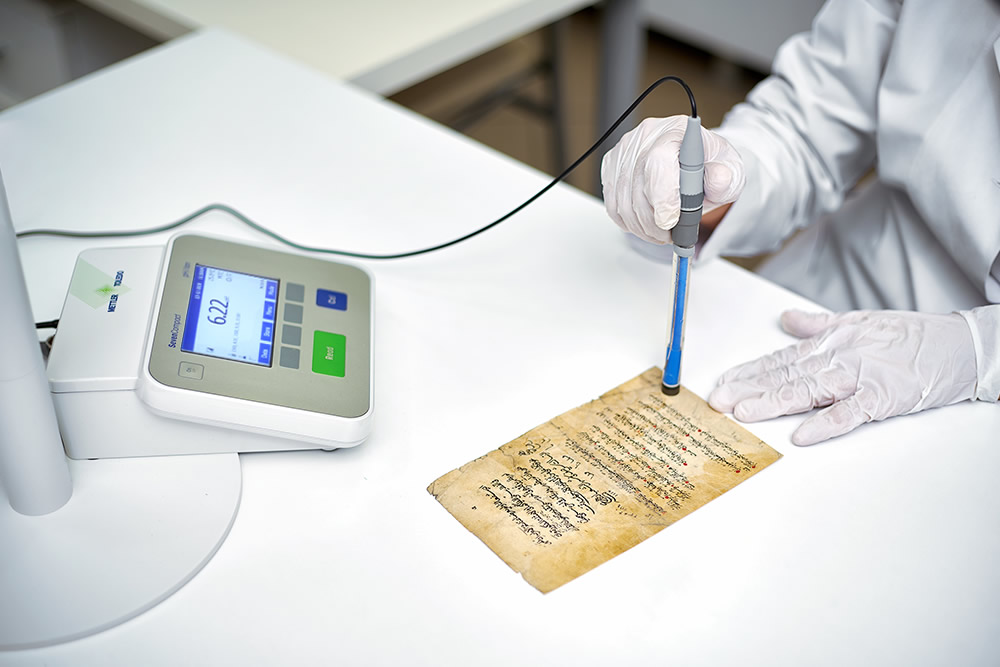

The dyestuff content of the dyes and pigments of organic origin are determined by HPLC (High Performance Liquid Chromatography). As a result of this analysis, the material, geographical origin of the dye source and approximate date (century) of production can be determined. The determination of dyestuff or dye sources is done by a comparison of pure dyestuff standards or dye sources. For dyestuff analysis, a sample size of 0.5-3.0 mg is sufficient. The dyes or pigments analyzed can be on a historical material such as a textile, yarn, wood, mural, painting, leather, manuscript, miniature, ceramic, and the like, or a newly produced material. Dyestuff analyses and results obtained in historical and archaeological samples contribute greatly to conservation efforts and enable material to be restored with original material/dye/pigment.
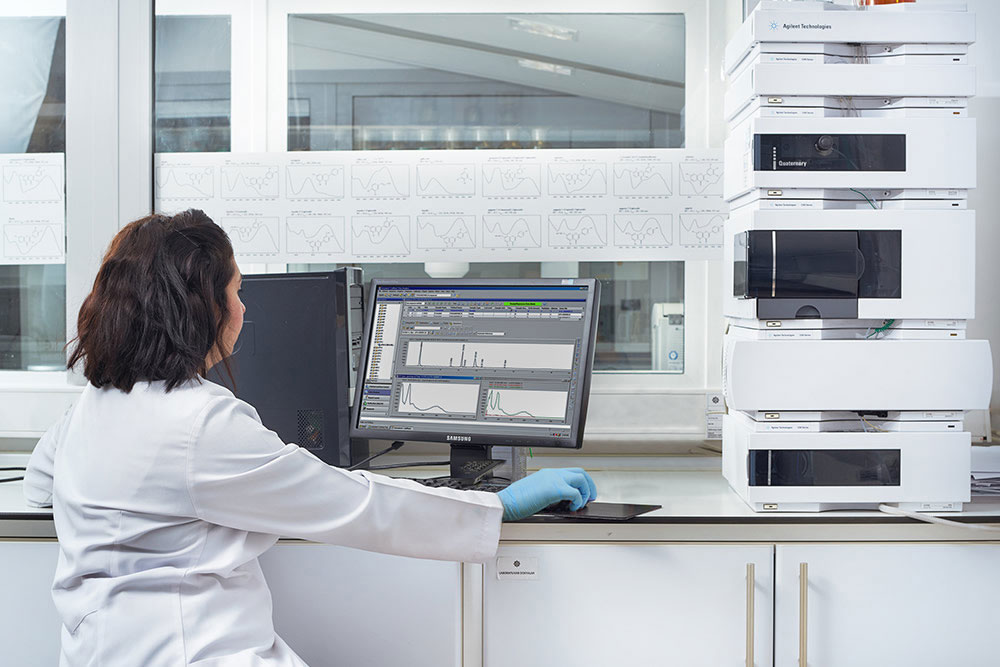
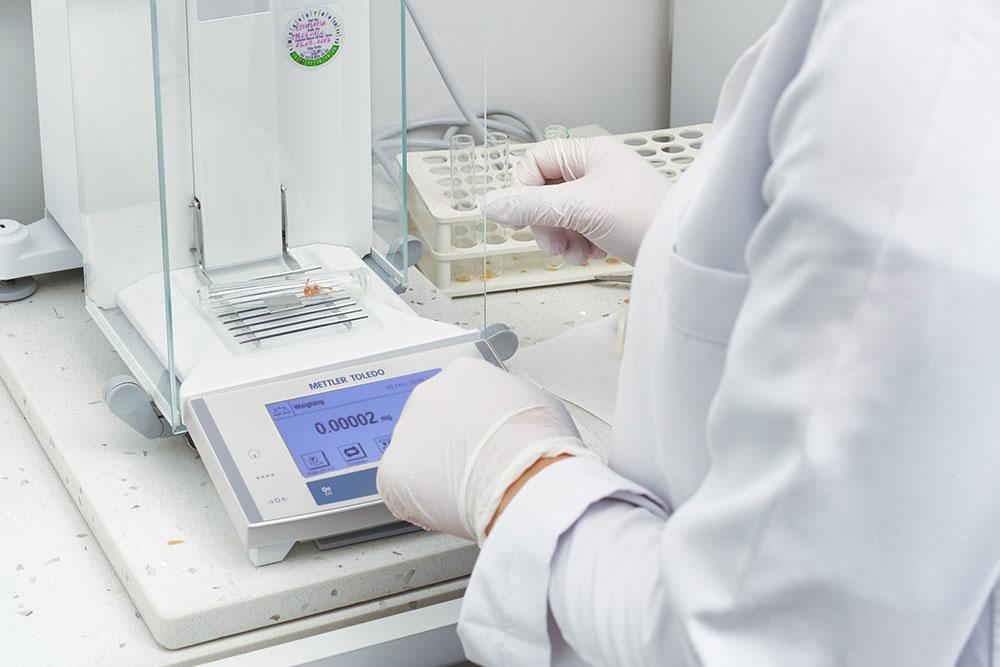
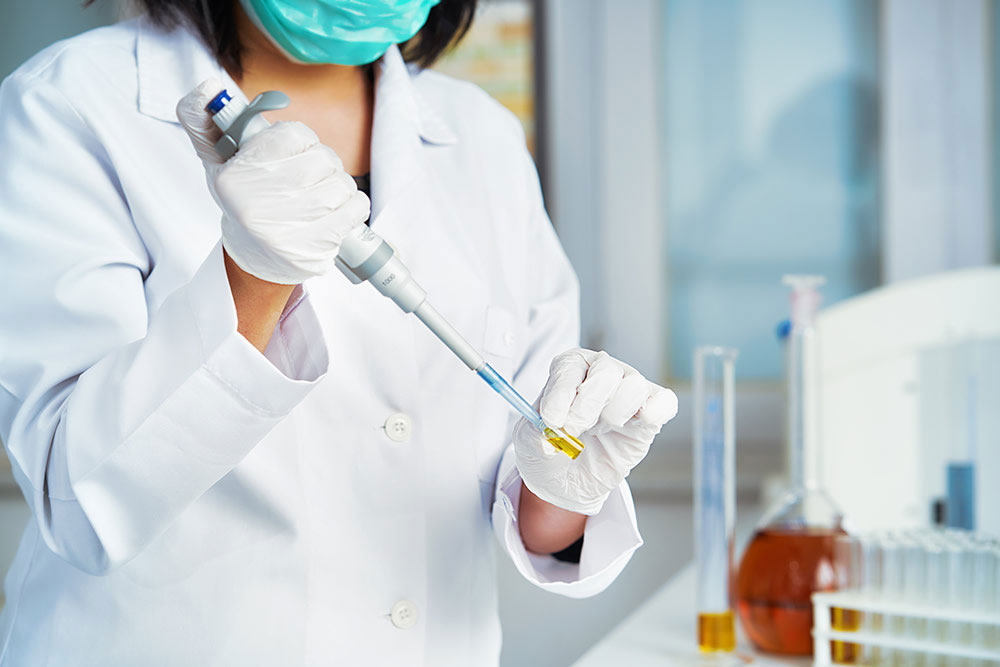
Micro and non-destructive analysis methods in the analyses of the archaeological and historical objects have become the universally accepted standard in recent years. This method helps to analyze the pigment in the objects by taking samples at nanogram or milligram weights (up to the head of a pin) without damaging the objects. SEM-EDX (Scanning Electron Microscopy with Energy Dispersive X-ray Spectroscopy) method is used at our laboratory for analyses of the inorganic origin pigments. Thanks to this method, the sample surface can be displayed at any desired size (maximum one million magnification) and the elemental content can be determined. Numerical values such as particle size, thickness, diameter of the pigment in the fields displayed can be determined. Elemental analysis is performed with different techniques, such as point, linear or mapping. Elemental analyses also provides information on the distribution of the elements and their percentages. These results can also help the dating of a historical and archaeological object. The pigment samples can be found on glass, ceramic, tile, stone, soil, mural, painting, metal, mortar, leather, textile, paper, miniature, gild, manuscripts, etc.
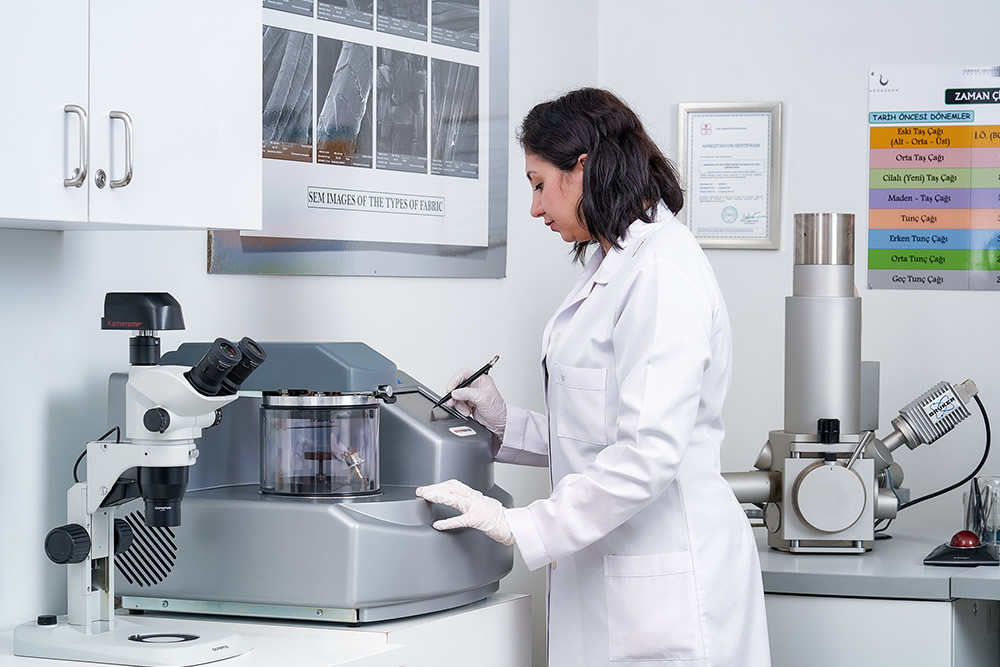
All the solid materials are analyzed in high or low vacuum by means of SEM-EDX to determine their elemental content. The analyzed sample can be conductive or insulating material. In this type of spectroscopic methods, very good results are obtained for conductive materials, while some additional steps are required for insulating materials. Therefore, mostly insulating materials are coated with gold, gold/palladium or carbon. Cultural heritage objects to be analyzed by this method are all the solid materials such as textile, yarn, pigment, ceramic, glass, paper, leather, mineral, stone, etc.
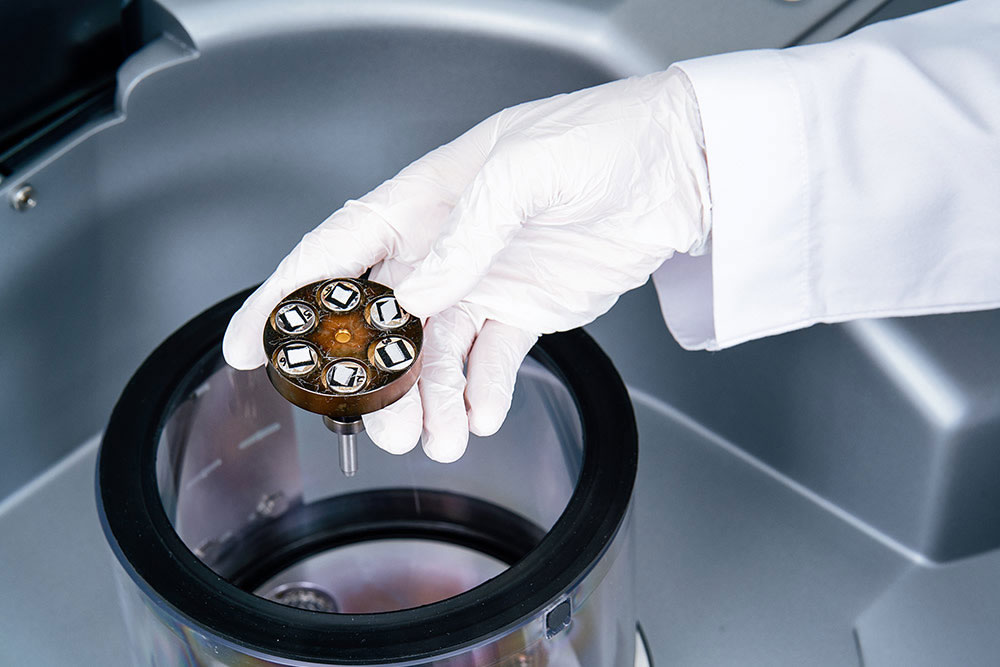
Fiber analyses of archaeological, historical objects as well as synthetic fibers used today is done with SEM (Scanning Electron Microscope) or optical microscope methods. By means of SEM and optical microscope, general and cross-sectional images taken from the surface of the sample are taken to determine the type of material used, such as yarn, textile, leather, bristle, etc. At the same time, this method also provides technical analyses such as twist direction of yarn, weaving or knitting type, warp-weft density and strength.
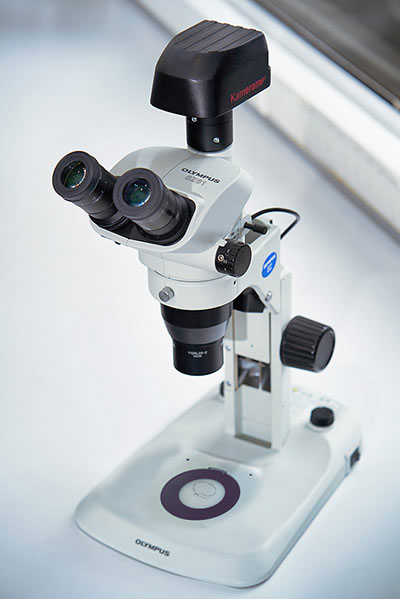
Color measurement allows for the numerical expression of each color on all colored surfaces. Color measurement is carried out in our laboratory with CIEL*a*b* spectrophotometer. The three main parameters that make up the color, L*, a* and b* values correspond to the X, Y, Z or R, G, B values in the computer. This method is a non-destructive analysis method used on colored surfaces and for restoration/conservation studies. New color work can be done based on the color measurement result for the restoration of cultural heritage objects. This method is used frequently in the restoration process of historical textiles. This analyses can contribute to both documentation studies and is a pioneering application for restoration works. Color measurement can be performed on approximately 1 cm2 area on solid surfaces of all historical and archaeological materials.
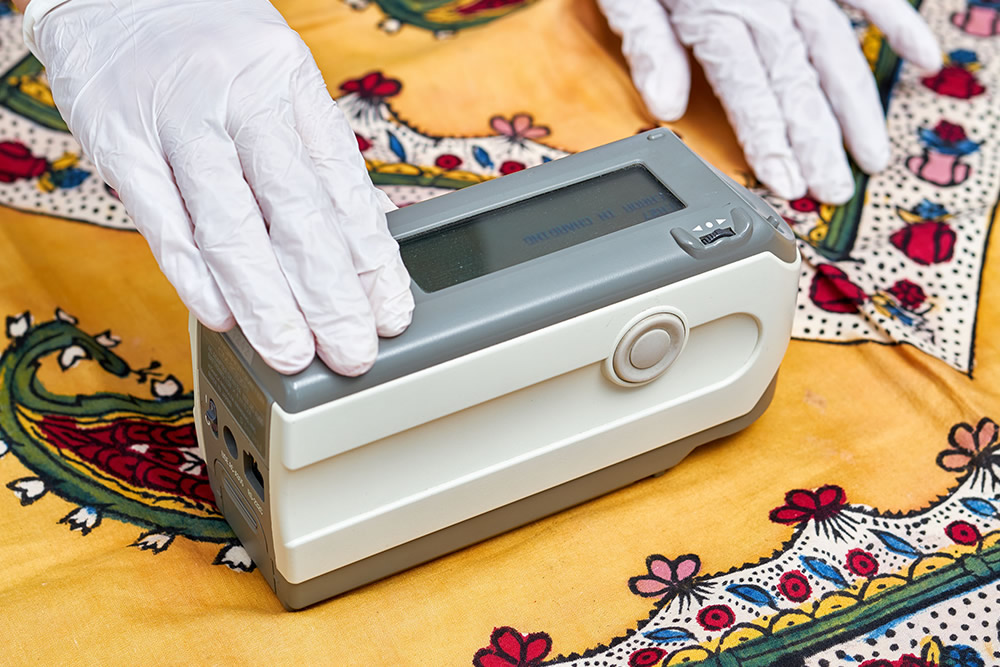
pH measurement is frequently applied in liquid materials and pH analyses can be conducted on any solid surface with the pH meter in our Laboratory. The acidity or alkalinity value on cultural heritage objects such as manuscript, leather, textile, wood, glass, ceramics, can be determined through this method.
